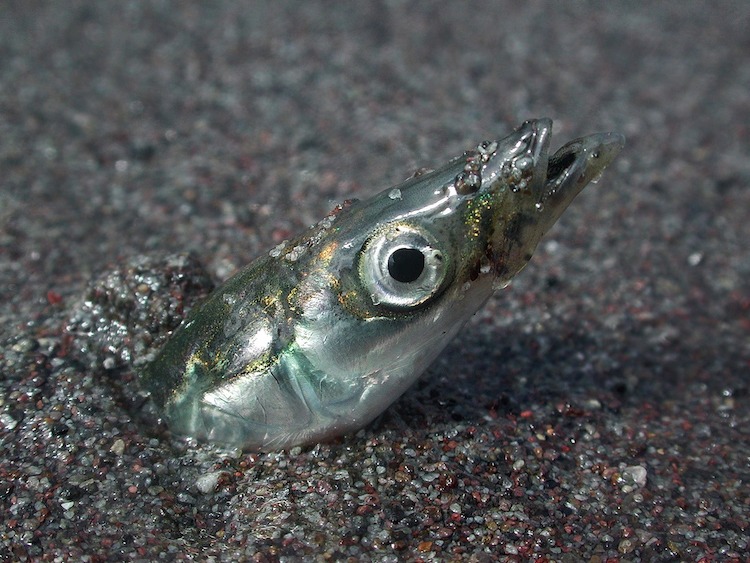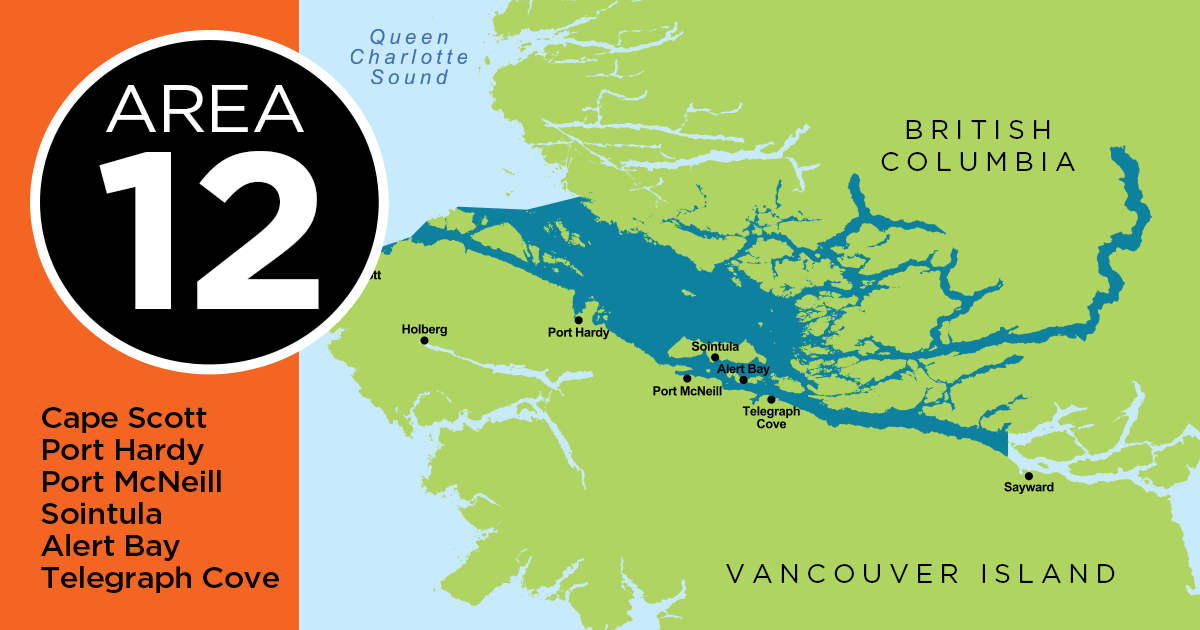
Salmon eat plenty of sand lance, so how can we use that to help us catch more fish? There’s sand lance all around Vancouver Island and Puget Sound, but it gets short shrift as a baitfish compared to herring and anchovy.
What is a Pacific Sand Lance?

Pacific sand lance (Ammodytes hexapterus) burrowing into the sand Credit: Mandy Lindeberg, NOAA/NMFS/AKFSC Public Domain
The long, skinny Pacific sand lance has a maximum length of about 20 cm (8″), but the average length found in the salmon stomach around the South Island is around 12 cm (4.75″). In spring and summer, you can find schools of sand lance swimming in the top 100′ of open water, and sometimes around kelp or near the shoreline. During fall and winter, they are found mostly near the shoreline. They spawn in sand, mud, and pebbled bottom areas. Sometimes you even see these fish in the pebbly sand at the tide lines. Just walking on the sand and pebbles along the tide line can make the sand lance stick their heads out of the sand. Some areas have more sand lance than others, and you can see proof in salmon stomachs.
How to Fish with Sand Lance Lures

Lures that imitating sand lance
There are a couple ways to fish with sand lance lures, depending on the season. During the spring and summer, typically you’ll want to fish the sand lance lures behind a flasher. Sand lance spoons, sand lance plugs, or needlefish hoochies imitate these baitfish, either inline with a flasher setup, or behind a dummy flasher setup. Due to the slim profile of the sand lance, you need a flasher to help bring the salmon’s attention to the lure. You want to pick the flasher that reflects the colors of salmon at current season. Lemon-lime, Herring Aid, rainbow, Moon Jelly, plaid, and the old-school traditional flasher tape are the effective patterns. Fish with a leader length of between 4′ and 8′ behind the flasher. During the fall and winter, use the same setup but a different trolling method—bottom bouncing in the sand and mud bottom while trolling. Some people discourage this method, but when applied correctly, it’s an extremely effective way to hook up more fish. Be mindful where you bottom bounce, of course.
Bottom Bouncing with Sand Lance

Bottom bouncing with sand lance lures
Here’s why bottom bouncing—dropping the cannonball on the bottom, then bringing it up a couple feet—with sand lance is deadly for salmon during fall and winter. During the winter, salmon know the sand lance are spawning and buried in sand, pebbles, or mud, and they can see the sand lance head sticking out of the bottom. They ram their heads into the bottom to feed on the sand lance. The other sand lance in the area will stick their heads out from the noise or try to find another spot to hide. Knowing this, we can replicate it by bottom bouncing. When the cannonball bounces on the bottom, it acts like a salmon pounding its head on the bot- tom. Having the flasher and spoon 5′ to 10′ behind the cannonball makes it look like salmon are feeding on sand lance.
Dummy Flashers

Hot Spot Medium Agitator Moon Dew
I prefer the dummy flasher setup, because I like having the flasher as close to the cannonball as possible. When the cannonball bounces on the bottom, the flasher will stir up the sand or mud for more action, mimicking heavy feeding. Then I have the spoon 3′ to 6′ feet behind the dummy flasher, which makes it look like the salmon missed the sand lance and the sand lance is fleeing. When it works as planned, another salmon will come and inhale the lure. Use an old flasher or metal flasher for the dummy flasher, so you won’t damage your best gear. Try bouncing the cannonball on the bottom every 5 to 15 minutes instead of skipping or dragging the bottom.
If you see a salmon with scratch marks around the nose to the gill plate, it’s from pounding the sand and mud to feed on sand lance, and it might be a good time to try bottom bouncing with sand lance lures instead of using your typical baitfish spoons. Give sand lance lures a try when other lures are not working, and you just might hook up more fish.
 This article appeared in Island Fisherman Magazine. Never miss another issue—subscribe today!
This article appeared in Island Fisherman Magazine. Never miss another issue—subscribe today!
Visit the Store
$34.99
$34.99
Featured Catch

Joel Unickow halibut (Photo: Rob Frawley Lucky Strike Sportfishing Tofino)







